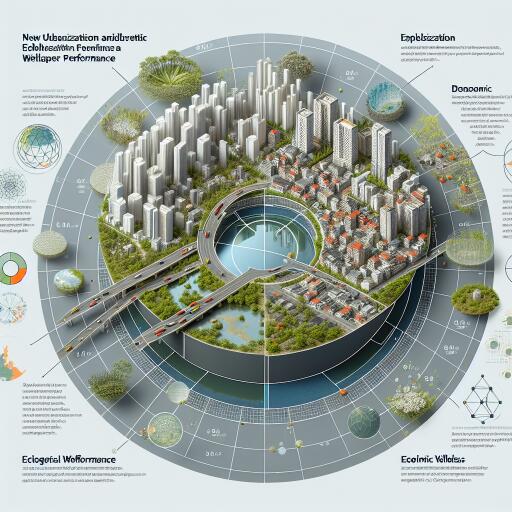
An Empirical Analysis of the Coupling and Coordinated Development of New Urbanization and Ecological Welfare Performance in China’s Chengdu-Chongqing Economic Circle
The intricate relationship between ecological wellness and urban development demands an in-depth investigation, particularly in the context of China’s rapid urbanization. This exploration is crucial for crafting sustainable cities that balance human needs with environmental preservation. A recent empirical study sheds light on this relationship within the Chengdu-Chongqing Economic Circle (CCEC), a region that epitomizes the challenges and opportunities of urbanization in western China.
The study introduces a novel framework that combines two key aspects of urban development: Ecological Welfare Performance (EWP) and New Urbanization (NU). By employing advanced methodologies, including the entropy weighting method for NU and the super-efficient SBM method for EWP, researchers have dissected the components and influencers of each domain. Moreover, the study leverages a Coupling Coordination Degree Model (CCDM) to gauge the harmony between EWP and NU, supplemented by an analysis of spatial-temporal patterns with a Geographically-Weighted Regression (GTR) model.
Key findings from this study include:
- There is a steady climb in EWP, averaging an annual growth rate of 2.59%, indicating a narrowing gap in ecological welfare among cities within the CCEC.
- NU, on the other hand, has seen more significant growth, with an average yearly increase of 7.6%. Importantly, this growth is mainly attributed to demographic and economic factors.
- The study observes a progression from basic to moderate coordination levels between EWP and NU, with EWP lagging slightly behind NU’s advancements.
- The size of a city positively correlates with better coordination levels, yet the impact lessens over time. Economic factors show a V-shaped influence, revealing their complex relationship with urban-ecological coordination, while the benefits of green technology innovation diminish over time.
- Regional disparities play a crucial role, with city size, economic prosperity, and green innovation affecting areas differently based on their demographic and economic statuses.
This groundbreaking research not only maps the current state of urbanization and ecological welfare in the CCEC but also identifies the factors that contribute to or hinder their coordinated development. The findings indicate that while urbanization proceeds at a rapid pace, attention to ecological welfare is crucial for achieving sustainable development.
The study’s holistic approach, integrating urbanization and ecological welfare into a single framework, offers a fresh perspective on urban development. It also provides valuable insights for policymakers and urban planners in the CCEC and other burgeoning economic zones. By embracing these insights, cities can navigate their path towards becoming dynamic yet sustainable urban environments that prioritize both human and ecological well-being.
As urban areas continue to expand and evolve, the balance between fostering healthy economic growth and preserving the environment becomes increasingly critical. This research presents a blueprint for achieving that balance, paving the way for future studies and action in sustainable urban development.





Leave a Reply